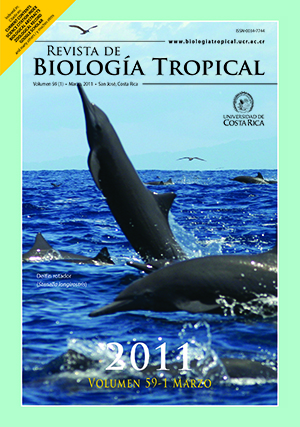Abstract
The Gulf of California is one of the most mega-diverse regions in the world, for which few fishery information is available. We present here latitudinal and bathymetric distribution of the most abundant and frequentbycatchspecies from the Gulf of California. The samples were obtained from a total of 111 hauls taken during seven research cruises of the closed shrimp season (2002-2005-2007), and also, from research cruises made at depths up to 90m. Due to the high variety species in this experi-mental shrimp bycatch, only those with highest biological value index (BVI) were selected. A total of fifteen species had the highest BVI and represented about 60% of the total abundance. A total of 16 508 organisms were analyzed, representing 243 fish, crustacean, mollusk and echinoderm species. Fish were the most abundant, being the most frequent species: Urobatis halleri, Synodus scituliceps, Diplectrum pacificum, Haemulopsis niti-dus and Eucinostomus argenteus. A wide latitudinal distribution of these species along the study area, as well as a bathymetric distribution from 9 to 67m depth, was observed. Two of these species were found at 325m depth. Due to the wide bathymetric distribution obtained, total abundances and sizes for each species by depth strata should be determined, and one can assume that deeper than 25m, the capture of these species decreases, and these areas can be used as natural repopulation areas, for depths where they are mainly captured by the com-mercial shrimp fishery.
Comments

This work is licensed under a Creative Commons Attribution 4.0 International License.
Copyright (c) 2011 Revista de Biología Tropical






